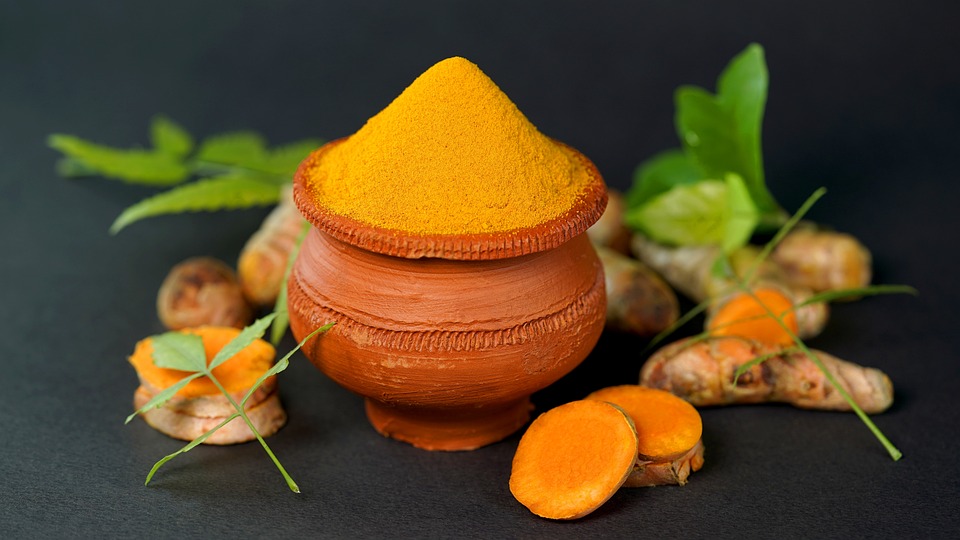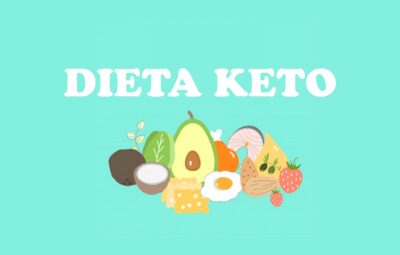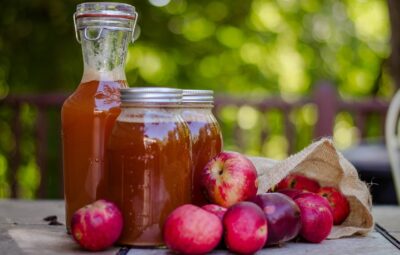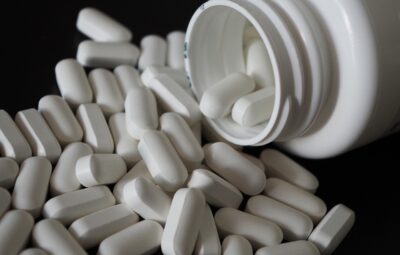The Discovery of Curcumin
It is added to foods for its distinctive color and used in some traditional medicines. The Curcuma longa plant, which is native to tropical regions in India and Southeast Asia, is the source of turmeric. This root, which is a member of the ginger family, is added to foods for its distinctive color and used in some traditional medicines. Turmeric was used to treat various human ailments 5000 years ago in ancient Ayurvedic practice.
It was about two centuries ago, in 1815 when German scientists Vogel and Pelletier reported that they had isolated a substance from the rhizomes of the turmeric plant that gives the yellow color. This substance is called curcumin, and it is the active ingredient in turmeric.
It was later determined that turmeric’s effects on health are mainly due to a golden-hued, fat-loving phytochemical that has antioxidant and anti-inflammatory properties. “A daily multivitamin is the nutritional equivalent of an insurance policy.” The European Society of Clinical Nutrition and Metabolism has said that taking a multivitamin every day is like having an insurance policy.
There’s no doubt that curcumin is one of the most bioactive molecules found in nature.
Many studies suggest that curcumin, a substance found in the spice turmeric, may help to prevent or protect against diseases linked to inflammation, such as cancer, diabetes, arthritis, and cardiovascular diseases.
Nutritional Profile of Turmeric
As per USDA, 100 grams of ground turmeric has the following nutrients:
- Calories: 312 kcal
- Protein: 9.68 g
- Fat: 3.25 g
- Carbohydrate: 67.1 g
- Fiber: 22.7 g
- Iron: 55 mg
- Calcium: 168 mg
- Magnesium: 208 mg
- Phosphorous: 299 mg
- Potassium: 2080 mg
The average amount of turmeric people take for medicinal purposes is around 500-2000 milligrams daily. You can also take one fresh teaspoon of ground turmeric.
Turmeric for Inflammation
To an extent, inflammation is essential for the body. The body’s immune system responds to any external threat by creating inflammation. There are many different factors that can lead to inflammation, some of which include infection, injury, and damage to muscle tissue.
A study found that while short-term inflammation can be helpful for the body, chronic inflammation can cause a variety of autoimmune and cardiovascular health problems. It also causes other problems such as exhaustion, fever, intense pain, and degenerative conditions.
According to a study, the anti-inflammatory properties of turmeric are from a compound called curcumin. Curcumin has antiviral, antibacterial, and antifungal properties. There are various ways in which curcumin has demonstrated its anti-inflammatory properties, such as its antiviral, antibacterial, and antifungal properties.
The first method of treatment is to inhibit NF-κB, which activates inflammatory cytokines. Curcumin helps to lower the amount of the NF-κB transcription factor, which in turn, inhibits inflammation. Curcumin has been shown to prevent inflammation by inhibiting the Tumour Necrosis Factor. TNFs are responsible for causing a large amount of inflammation in the body. Therefore, lowering the TNF is essential for preventing inflammation.
A study has found that curcumin helps to block TNFs, which inhibits inflammation. Curcumin prevents inflammation in three ways: by reducing oxidative stress in the body, by reducing the production of inflammatory chemicals, and by increasing the production of anti-inflammatory chemicals. The antioxidant properties of curcumin help it fight oxidative stress and inflammation. Sufficient research backs the above finding as well. Turmeric has strong anti-inflammatory properties because curcumin efficiently counters inflammation.
How to Use Turmeric for Inflammation
The best way to reduce inflammation is to take turmeric supplements. It is recommended by experts to have 500 to 2000 mg of turmeric each day for optimal results. # It would be impossible to consume such a high quantity of food through regular meals.
Additionally, the compound responsible for turmeric’s anti-inflammatory properties, curcumin, comprises only 3.14% of the spice. Turmeric may not be the best option for reducing inflammation through diet.
Concentrated turmeric extracts in supplements are 95% curcumin. Therefore, turmeric supplements are the most potent type. But these turmeric supplements, which have a higher ratio of curcumin, work well for bodybuilders and active individuals. Even though supplements are not regulated like medications, it is still important to do your research and make sure you understand the brand you are choosing.
The body’s ability to absorb curcumin is relatively low. In order to improve the benefits of turmeric, it is helpful to have a supplement that also contains BioPerine and AstraGin. These factors improve the absorption of curcumin by 20 times. You can take these supplements in tablets of 400-600 mg three times a day.
Turmeric for Muscle Recovery
Muscle pain arises due to inflammation. Inflammation that persists over time can cause problems by preventing you from being active. When the body experiences inflammation in a specific area, more immune cells are sent to that area to help repair the damage.
As more fluid is concentrated in a small area, it leads to swelling. Once the inflammation gets treated, the swelling will subside. Turmeric can help fasten the muscle recovery process.
Curcumin can help improve muscle recovery by reducing inflammation. A study found that curcumin’s anti-inflammatory properties make turmeric a natural muscle recovery agent.
A study conducted on rats showed that the curcumin supplement improved their muscle recovery and performance. Animal studies have shown that curcumin may help with muscle recovery.
A study that was done recently showed that if you take curcumin, it will reduce the damage that is done to your muscles after you do an intense workout. Another study done on humans showed that curcumin was able to reduce the oxidative stress caused by vigorous and repetitive activity. It, in turn, reduced inflammation and hastened muscle recovery.
Can Curcumin Improve Sports Performance?
We know that resistance training is very effective in building lean muscle mass, so it is a popular choice among athletes. If done improperly, it can cause muscle damage that can negatively affect athletic performance. This means that it is especially important to have recovery periods when training and competing.
When your muscles or tissues are damaged, it causes inflammation. This is a normal response from your body’s immune system to stress. Some inflammation is beneficial because it helps with muscle repair and adaptation, but too much inflammation can cause secondary muscle damage, especially when eccentric muscle activity is involved. These side effects include decreased muscle strength and range of motion, swelling, and delayed-onset muscle soreness (DOMS), which is muscle pain and stiffness.
DOMS and inflammation are generally the highest one to two days following a resistance training session. Many people’s first instinct is to take Advil or other NSAIDs for relief. Despite the perceived benefits of NSAIDs, controversy about their potential adverse effects — like digestive issues and insomnia when used long-term — has sparked public interest in more natural alternatives with anti-inflammatory actions. This is because curcumin is thought to have a similar effect to NSAIDs but without as much inflammation. In the cell, curcumin is effective as an antioxidant by suppressing the molecules and pathways that cause inflammation. Some people think that if you can control inflammation better, it might help your muscles recover faster and make you physically stronger overall.
As a result of these findings, researchers looked into whether curcumin could help to reduce the negative effects of muscle damage and inflammation that can come from downhill running. The study involved 20 healthy men who were moderately active. This study was more reliable because it was double-blind and randomized-controlled. Both studies showed that taking curcumin before and after exercise can help to reduce DOMS.
Next, another study found that using a more bioavailable form of curcumin supplementation decreased inflammation and muscle damage markers caused by exercise.
Other Benefits of Turmeric
Heart Healthy
Heart disease is the leading cause of death worldwide. Turmeric curcuminoids are beneficial to heart health as they improve endothelial function. As people age, the endothelial membrane starts to lose some of its functions. The intake of high amounts of salt can lead to high blood pressure and heart disease. Curcumin has an impact on the endothelial membrane, which could reduce the likelihood of heart disease.
A study on postmenopausal women found that people who supplemented with curcumin saw the same level of improvement in endothelial membrane health as people who regularly did aerobic exercise.
It May Help Prevent Cancer
One of the causes of tumor growth is inflammation. Turmeric can help to prevent cancers by reducing inflammation. A study has suggested that curcumin, which is found in turmeric, has the ability to stop tumors from growing.
It can also reduce the rate at which tumors grow. It can also prevent tumor growth by interfering with cell signaling pathways and causing them to die. Turmeric can help prevent various types of cancer, including colon, pancreas, prostate, and breast cancer.
May Delay the Onset of Alzheimer’s Disease
Healthy neurons are essential for keeping your brain healthy. Protein Brain-Derived Neurotrophic Factor (BDNF) is responsible for keeping neurons healthy, according to research. The levels of the brain-derived neurotrophic factor (BDNF) may decrease with age in the brain and spinal cord.
The same happens in the case of Alzheimer’s disease. Turmeric may help to treat Alzheimer’s by increasing levels of BDNF (Brain-Derived Neurotrophic Factor) to levels that are essential for healthy brain function.
It Helps People with Depression
The rats in the study were given turmeric, and the results showed that turmeric has antidepressant effects. Studies done on humans have also given similar results. The results from turmeric were just as good as the results from Prozac, which is a drug used for treating depression. Turmeric not only helps improve BDNF levels but can also help increase the secretion of neurotransmitters, such as dopamine and serotonin.
Good for Skin
Skin diseases are more prevalent because they are often infectious. Turmeric has antimicrobial properties, which are good for the skin. This means that it can help with skin conditions like psoriasis and eczema.
A review of studies showed that turmeric could help with psoriasis, a skin condition caused by chronic inflammation. Nowadays, turmeric complements other skin treatments.
What’s the Best Time to Take Curcumin?
The studies found that curcumin had promising effects in reducing the side effects of muscle damage, but it’s unclear if the timing of intake makes a difference. A recent study published in the Scandinavian Journal of Medicine & Science in Sports earlier this year found that curcumin ingested 7 days after exercise may help the muscles recover from exercise-induced damage more quickly. An added bonus? A study found that curcumin supplementation reduced inflammation when taken 7 days before eccentric exercise.
How to Consume Curcumin
Although turmeric may help you recover from your workout, it is not the only method, and there are no established guidelines on its use. Before taking curcumin as a complementary or alternative medical approach, consult a healthcare professional to determine if it’s appropriate.
The studies mentioned in the text vary in the amount of curcumin used per day, from 100mg to 2.5g. To get an equivalent amount from turmeric, you would need at least 4g, or 120mg of curcumin. If you want to increase your dosage of curcumin, you might be more interested in dedicated curcumin supplements.
If you want to try turmeric in your food but don’t like curries, there are other ways to use it. You can cook with turmeric by adding it to vegetables or lentils, adding it to salad dressings and teas, or even making a couple of cups of “golden milk” each day. That’s a traditional Indian drink that follows a template like:
- 1 cup of hot milk (or a non-dairy alternative)
- One teaspoon of turmeric
- A pinch of “warming” spices like cinnamon, nutmeg, and/or cloves.
- Optional: 1 tablespoon honey
- Optional: 1 tablespoon of coconut oil
The Verdict
It is thought that the health benefits of curcumin are more effective when it is part of a diet that is also high in fruits and vegetables. While turmeric has limited absorption in the body, it may be more beneficial to consume it with black pepper. Piperine, a compound found in black pepper, can increase turmeric’s absorption by up to 2000%. Another way to get the benefits of curcumin is to consume it with foods that contain healthy fats. Several formulations have been developed to help the body absorb curcumin supplements better. For example, there is a formulation that dissolves quickly when ingested and another that is based on lecithin (a fat).







